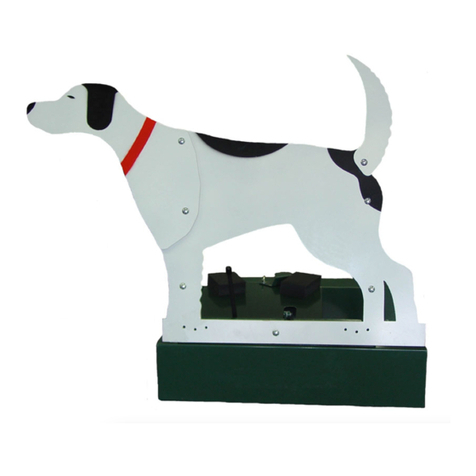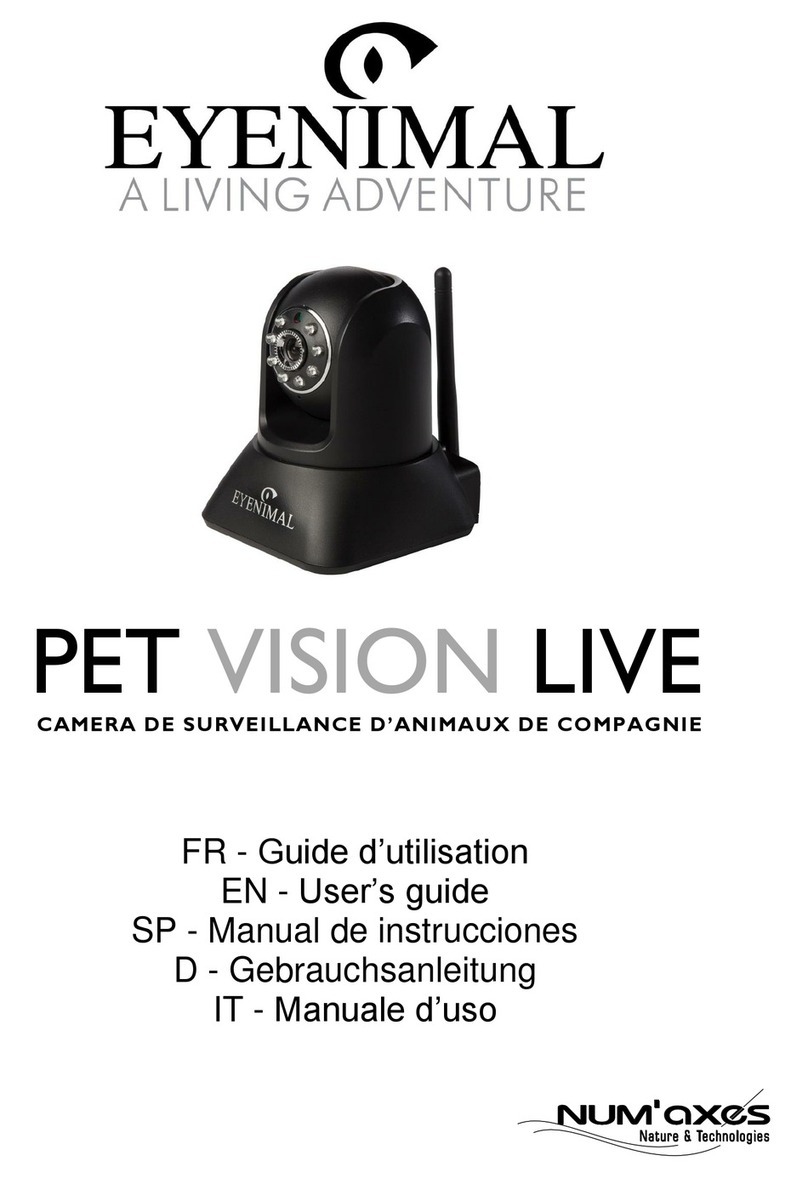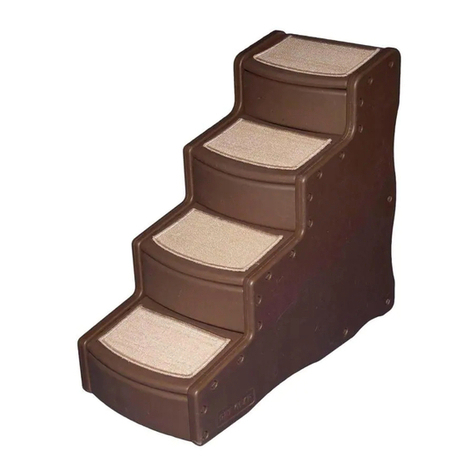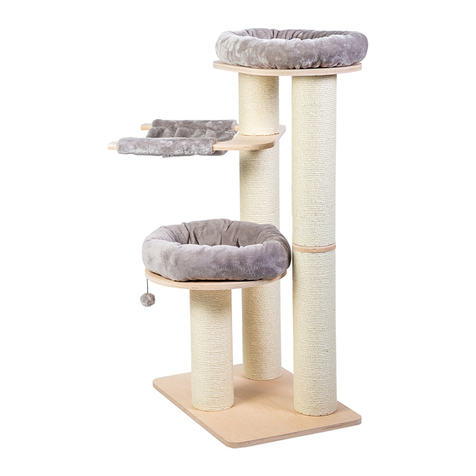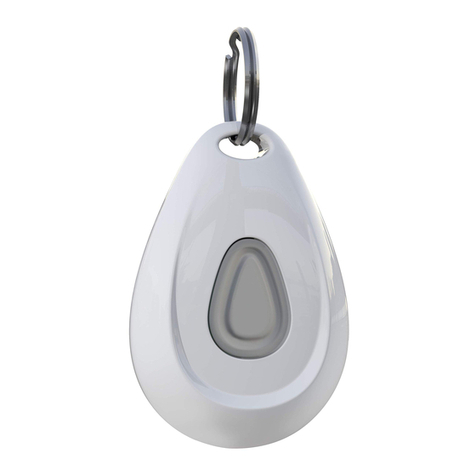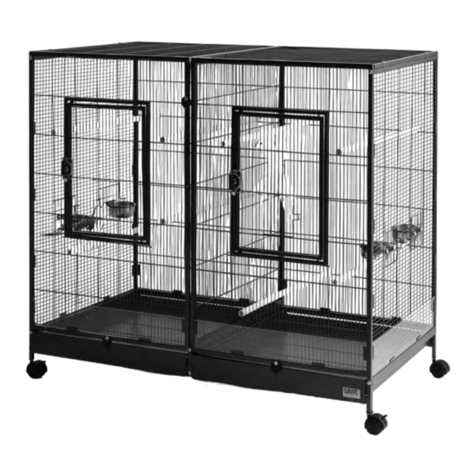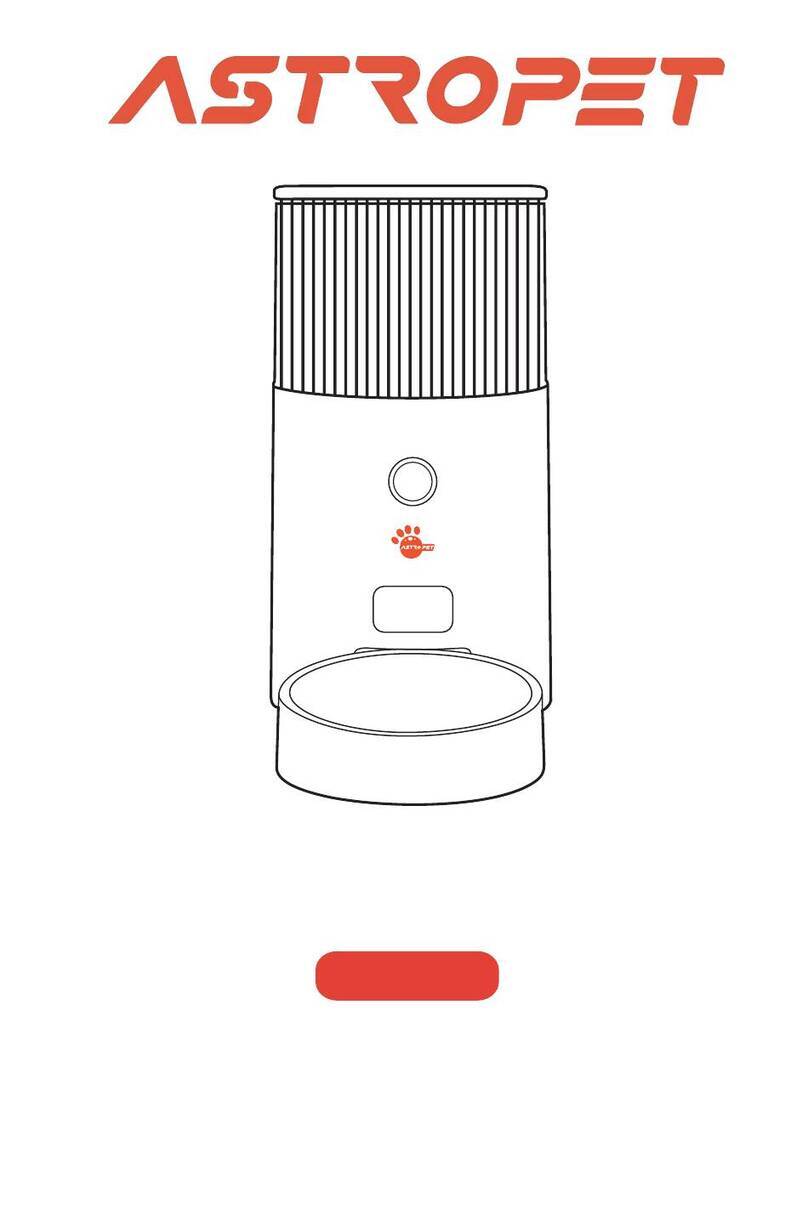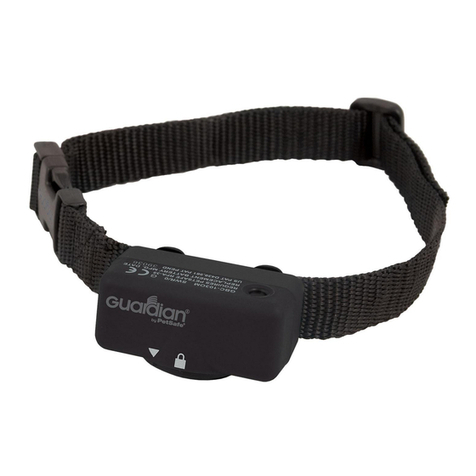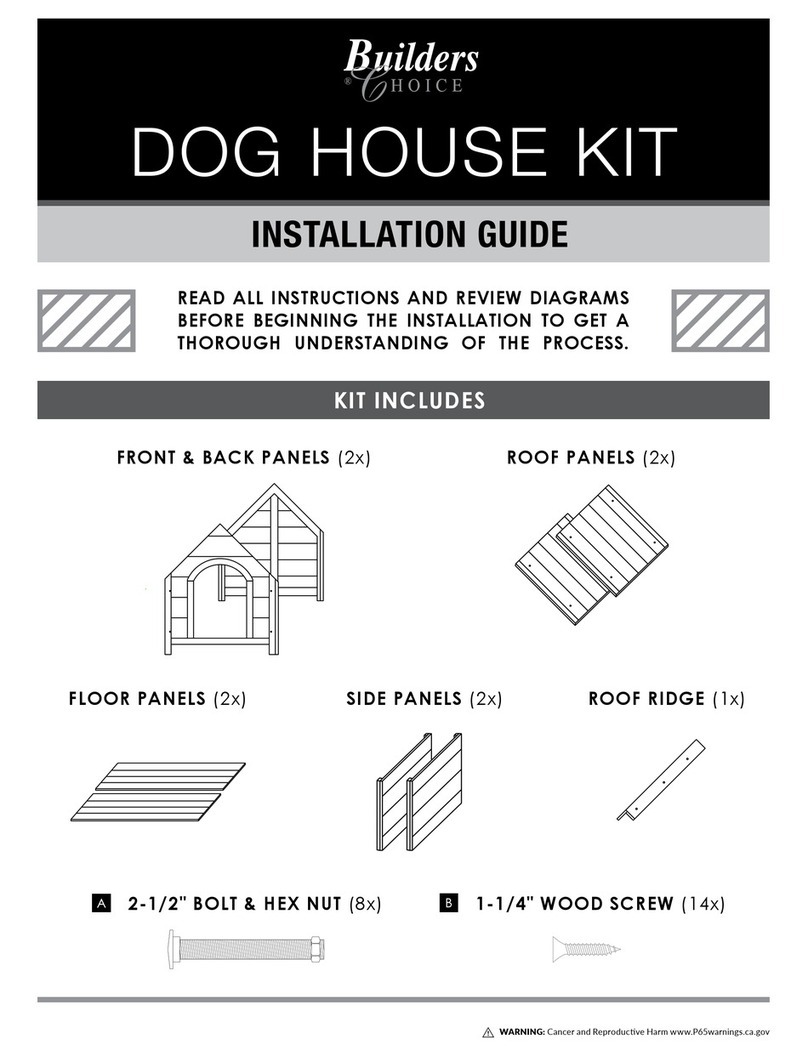GM8 Group Standard Instruction Manual

COIR BEDDING
COMPOSTING BOOK
COIR MOISTURE MAT
1
LIME MIX
WORMS
WORM TREATS
TAP & WING NUTS
SUMP TRAY
LID
HOLDING TRAY
STAND
TRAY
Before getting started, please check your delivery package against the
checklists below to ensure it contains all the correct items.
1
Standard Tiger Wormeries (3 or 4 Tray)
• 3 or 4 x trays depending on which wormery
you’ve chosen
• 1 x drainage sump tray (with hole)
• 1 x holding tray (looks like a normal tray, but
with a hole)
• 1 x pack of lime mix (1.5kg)
• Coir • Coir worm bedding
• 1 x pouch of tiger worms or worm card
voucher
• 1 x stand
• 1 x tap with white nut & 2 washers
• 1 x lid
• 4 x screws with wing nuts
Deluxe Tiger Wormeries (3 or 4 Tray)
• 3 or 4 x Trays depending on which wormery
you’ve chosen
• 1 x drainage sump tray (with hole)
• 1 x holding tray (looks like a normal tray, but
with a hole)
• 1 x pack of lime mix (1.5kg)
• coir • coir worm bedding
• 1 x pouch of tiger worms or worm card
voucher
• 1 x stand
• 1 x tap with white nut & 2 washers
• 1 x lid
• 4 x screws with wing nuts
• 1 x pack of
• 1 x pack of worm treats
• 1 x coir moisture mat
• 1 x Composting With Worms book
BUILDING YOUR WORMERY

AFTER 6-12 MONTHS

Early days
The worms rely on the food decomposing (rotting) naturally a certain amount first, so don’t worry if the
food is looking rotten and mouldy – your worms will love it! For the first few weeks add a couple of
handfuls of waste only every few days and increase over time thereafter. Once established, your Tiger
Wormery should cope with the average food waste output of a family of 4. The Tiger Wormery is an
‘upward migration’ based system. Once your first tray is full, place another empty tray on top and start
adding your food waste to this tray. The worms will follow the food up into the next tray through the mesh
base when they’base when they’re ready. Then you do the same again with your third tray and so on. By the time your third
or fourth tray is full, the tray on the bottom should contain compost ready to harvest.
During the assembly process, you might be worried
that you’re missing your sump tray. It is usually
packed inside the lid as it’s the same size and shape
and it has a hole to distinguish it from the lid and
the other components. Once your Wormery is
assembled, add two good sized handfuls of rotting
food waste to a corner of your first working
(bottom) t
(bottom) tray and place the lid on top. You should
wait around a week before adding further waste as
the first few weeks are when the worms settle down
and explore their new home and become mature.
Your worms will eat any dead and decaying organic
matter including ordinary kitchen waste such as
peelings, bread, cooked and uncooked scraps, tea
bags, egg shells and paper kitchen towels (do make
sure food waste is rotting when it is added).
Virtually any organic kitchen waste can be used. As
most organic kitchen waste has a high-water
content, no additional
content, no additional water should be added.
Please note organic kitchen waste will be 85%
water. With this in mind it is advisable to drain
kitchen waste prior to adding it to the Wormery,
especially if you use a kitchen caddy. It is surprising
how much
liquid can accumulate
in even a small
kitchen waste container. Too much water could lead
to “waterlogging” of the waste, this in turn will allow
the
the waste to compact and air will be excluded –
remember that worms cannot live without air. If you
include meat scraps be careful not to attract flies -
either bury them or cover with a layer of coir or leaf
mould.
3
Essentially, your Wormery is designed to deal with kitchen-generated organic food waste, however the
odd handful of leaves or similar garden waste may be used (avoid woody and thick fibrous material) from
time to time. However, don't use large quantities of garden material such as lawn clippings as this will be
far too much waste at one time and may heat up and be harmful to the worms. Large quantities of garden
waste are perhaps best dealt with by conventional composting techniques involving a heap or proprietary
bin such as the Rotol Compost Converter and Garden King Composter. Also, garden waste can contain
eggs from insects and spiders which will upset your worms and the process.
YYou can also use waste and litter from small vegetarian pets like rabbits and hamsters, but dog and cat
faeces (poo) and indeed the waste of any meat-eating animals should not be added as they can carry
diseases (if you have a problem dealing with dog waste (poo) then visit www.originalorganics.co.uk for
details of our pet poo Wormery). Don't add too much onion, leek or citrus fruit peel as this tends to make
the environment too acidic.
What to feed your worms
YES PLEASE
NO THANKS

If these items with high acidity are added, lime mix should be mixed in each time you include the waste,
this helps keep the compost 'sweet'. The lime mix should certainly be added if you notice tiny cotton
thread-like white worms appearing. These pot worms or enchytraeids are natural and quite harmless
however, they are an indicator that the compost is becoming too acidic (the ideal pH is neutral) and/or too
wet. Add one small handful every 6 weeks or so in normal conditions (crushed egg shells do the same job).
Looking after your wormery
4
Conditions in each Wormery are bound to differ because of numerous variables such as type, frequency
and state of food added, location of the Wormery and the temperature. No two Wormeries will have
identical conditions. In view of this, operating a Wormery involves just a little bit of 'art' and some common
sense.
Whilst it is true to say that the
Whilst it is true to say that the Wormery requires relatively little maintenance, its success is dependent
upon the health of the worms. A short inspection on a regular basis should ensure that the worms stay on
course. Every 4 weeks or so gently dig into the compost with a hand fork or stick to check that the worms
are thriving, and that compost production is underway. Whilst doing this you will be able to check for any
possible indications of excess moisture (waterlogging) or acidity.
Adding hand torn ca
Adding hand torn cardboard egg cartons each month will help absorb the large quantity of liquid
generated and reduce any excess wetness in the compost. The worms will eat the cardboard so do not
worry about overloading the Wormery. If in doubt add a handful of lime mix and mix in plenty of dry torn
cardboard egg cartons or cardboard toilet roll inners. Draining off the liquid feed frequently also helps to
prevent over-moist conditions. Worm composting is a simple, clean and efficient natural process. A little bit
of care and attention will ensure success. Although problems are few and unusual, they are simple to avoid
and usually stand usually straightforward to remedy. If conditions become less than ideal, your worms may slow down
their processing of food waste or leave the Wormery.
If this occurs stop adding new food for a few weeks to give them a chance to catch up, check the Fact File
and troubleshooting section in this information booklet. If you are in any doubt or have any queries
concerning your Wormery please do not hesitate to call us - we are only too happy to assist. The timely
resolution of any minor problem or difficulty should avoid the possibility of any more major problems or
failure later.
Harvesting your kitchen waste liquid feed
This is produced more quickly than the compost and
you should be able to start tapping this off after
about 3 to 4 weeks or earlier. Check for liquid every
week. It is important not to allow the sump liquid
level to become too high. If you think the waste
material looks too wet, mix in plenty of dry torn
cardboard egg cartons or newspaper to soak up the
excess liquid.
excess liquid.
We would advise you to check whether the Wormery
sump needs emptying every week – if this is required
simply pull the tap towards you to fully open it. Store
the liquor in a sealed plastic container. This excellent
general-purpose liquid plant food has numerous uses
for house and garden plants.
Dilute the liquid with 10 parts of water to one part of
liquor for your organic, liquid plant food. Typically,
the liquid feed is high in the major plant nutrients
potassium and phosphorus, has a medium level of
nitrogen and is rich in essential minerals and trace
elements. Please note that the liquid feed can have a
strong odour at the point of tapping off. However,
any odour should dissipate
any odour should dissipate rapidly upon dilution and
application.
Remember
1 part
worm liquid
to
10 parts
water

Getting Started
I can’t find my sump tray, where is it?
It will most likely be packed inside the lid as it’s the same size and shape and it has a hole to distinguish it
from the lid and the other components.
Once my Wormery has been assembled, how do I get it up and running?
Once
Once your Wormery, whether it’s an all-in-one or multi-tray, is assembled, add two large handfuls of rotting
food waste to a corner of your first tray and place the lid on top. You should wait around a week before
adding further waste as the first few weeks are when the worms settle down and explore their new home
and become mature.
The worms rely on the food decomposing naturally a certain amount first, so don’t worry if the food is
looking rotten and mouldy. For the first few weeks add a couple of large handfuls of waste every few days
and increase over time thereafter.
5
What is coir bedding?
The coir bedding in the plastic bag is something
The coir bedding in the plastic bag is something you can use right from the start
and is a crucial component for helping worms settle into the Wormery. Simply
put down a layer of newspaper and then put the coir bedding onto it, spread it
evenly over the newspaper. The alternative to the coir bedding in the plastic bag
is the coir block, place the block in a container, put enough water in to cover it
and leave to soak. Then drain it and squeeze out excess moisture before
spreading it evenly around the bottom tray on top of the newspaper. Then you
can add the
can add the worms. We also sell coir blocks which work in exactly the same way.
The coir bedding is not to be confused with a coir mat or coir moisture mat.
What does a coir mat do and is it the same as a moisture mat?
A coir mat, sometimes referred to as a coir moisture mat or moisture mat, keeps
your compost warm and moist and will make it easier for the worms to find the
surface and it encourages them upwards to where the food waste is. The mat
should be placed on the food waste in the working tray. When that tray is full
and another tray is started, place the mat on the food waste in the new working
tray, they will eventually rot and be eaten by the worms.
What are the purpose of worm treats?
If
If your Wormery gets too wet, the worm treats can be added to absorb any
excess moisture. They can be processed by your worms and are wood-based
pellets. Our 1.5kg bags will give you about six months’ supply and they can be
added gradually.
What is the anti-acid lime mix and what does it do?
Essentially it is a gentle
Essentially it is a gentle form of calcium which reduces the acidity. Most food
waste is mildly acidic and worms thrive best at a broadly neutral pH (7). A small
handful sprinkled over the surface every 4 to 5 weeks will keep the conditions
sweet. Crushed up eggshells (which are essentially calcium oxide) have the
same effect.
Why Tiger worms?
Red wiggle
Red wigglers (Tiger worms) are recommended by most vermicomposting experts,
as they have some of the best appetites and breed very quickly. Other breeds of
worm can be used, but they do not adapt as well to the shallow compost bin or
work as hard as the tiger worms, so the progress of your compositing will be
slower. Tiger worms typically live for between 6 months up to 2 years.
What can I put in my Wormery and what should I
avoid?
You CAN put the following into a Wormery:
• Most cooked/uncooked food waste.
• Small quantities of cooked meat.
• The waste and bedding from herbivorous animals
like rabbits and hamsters.
AVOID putting in:
• Acidic foods including fruits and peels in quantity.
• Fish as it can get smelly quickly.
• Pet poo (except into a Pet Poo Wormery), nappies
and flour.

The Process
What is the best temperature for the Wormery to operate at?
Worms operate year round, but they work best within the temperature range we humans tend to feel
comfortable in. The optimum temperature range is 18-25°C but your hard working Tiger worms will work
well at lower temperatures, although there may be a noticeable 'go slow' below 10°C. Temperatures over
30°C are best avoided. Please note that in the first 8-10 weeks after setting up the Wormery, the worms
are particularly vulnerable to extremes of temperature.
How much compost can a Wormery hold?
How much compost can a Wormery hold?
Each tray in a 3 or 4 Tray Wormery can hold approximately 15.5 litres, giving 3 Tray Wormeries a capacity
of roughly 46.5 litres and 4 Tray Wormeries a capacity of around 62 litres. The capacity of the all-in-one
Wormeries will vary depending on which model you select and the food waste you put in it.
How long does the process take?
The
The Wormery is quick and efficient. Within about 3 to 4 weeks you’ll be tapping off the liquid feed. To start,
let food waste rot for 3/4 days in a kitchen caddy before adding to the Wormery, this then takes 6-8
weeks to turn into compost. However, most people wait until the Wormery is nearly full before emptying
the compost. As you are adding food all the time it typically takes 6-12 months. Remember, over 75% of
what goes in comes out as an excellent nutritious liquid plant food. Remember to dilute the liquor 10 parts
water to one-part liquor before using it on your plants or vegetables.
What about flies?
Flies should find it
Flies should find it rather difficult to get into your Wormery. However, Wormeries can sometimes provide a
good breeding environment for them if they are inadvertently introduced with some waste. If you do end
up having a problem with flies you can use an organic fly spray to kill their lifecycle.
What about mould and weeds?
In the early stages of decomposition of
In the early stages of decomposition of vegetable matter, a furry grey mould may occasionally appear. It is
not unpleasant, will not affect the worms and will soon disappear. It’s also unlikely weeds will appear, but
possible. The most likely cause is the addition of weeds with seed heads. In any event this is no problem.
Simply pick out any seedlings to prevent further growth.
Can I add newspaper?
Y
Yes, but the best thing to add to absorb excess liquid is torn cardboard egg cartons, make sure you
thoroughly mix them into the food waste. If your Wormery seems very damp then add as much dry, torn
egg cartons as necessary to absorb the excess moisture, be sure to mix into the food waste, throughly.
This may require a significant quantity of cardboard. The occasional handful of lime mix also helps ensure
that the process remains sweet.
Does the Wormery need to be maintained?
A
A Wormery requires relatively little maintenance, but it’s advisable to check on the health of the worms
every few weeks to ensure it’s working properly. Just gently dig into the compost with a hand fork or stick
and you should see healthy looking worms.
If you wish to clean the Wormery, use a damp cloth only and not any detergents or soaps. A wipe over with
a damp cloth is all that is required to keep the unit looking good and won’t harm the worms at all. If you
use kitchen towel, then the towel itself can be added to the Wormery to become part of the composting
process. Be sure to check and drain off the liquor produced every week.
Do Wormeries smell?
Do Wormeries smell?
A Wormery is almost an odourless process because the food is consumed by the worms rather than left to
decompose. Therefore any strong odour is eliminated by the worms before it has a chance to occur. If you
stick your head inside a Wormery – you may notice a compost-like sweet smell, an earthy chrysanthemum
or even a tomato plant smell.
What is vermicomposting?
V
Vermicomposting is a composting process using various species of worms, usually red wigglers (Tiger
worms), white worms and other earthworms, to create vermicompost, from a mixture of decomposing
vegetable or food waste and bedding materials (also called worm castings, worm humus, worm manure, or
worm faeces). The end process of vermicomposting contains a nutrient-rich fertilizer and soil conditioner
and also improves the moisture holding capacity of the soil.
6

Emptying the compost
When your third or fourth tray is full the first tray should be ready for harvesting, this may typically be 6
months on (or longer) from when you first set up the system. The contents of the bottom tray will be a rich
dark colour, if not black. Simply lift off the upper trays to access the bottom one, then remove it and
harvest your compost.
The
The working trays are then replaced on the stand and you now have a spare tray ready to go on top of the
stack when required. As most of the worms should be in the upper trays, you should not lose too many
when the compost is spread on your garden. However, if a few worms are added to the garden with the
compost they will not cause any harm whatsoever.
F
For really professional looking results, the compost can be sieved through a 12mm sieve prior to use
although this is not essential. Worm compost is rich, fertile and nutritious and contains many valuable
trace elements, so use in handfuls rather than barrow loads. It makes excellent top dressing or can be used
to make quality potting compost. It can also be used as a topping for house plants and garden tubs and is
quite excellent for tomatoes and roses. Worm casts are one of the richest natural sources of balanced
organic nutrients for horticultural use known to man. Perhaps not surprisingly it's known as "the caviar of
composts".
Typical Compost Mixtures
Gardeners have their own preferences for the perfect compost mixture for a particular purpose and the
ideal mix will vary according to your soil. The following formulae are typical (and for your guidance):
• Top dressing: Spread a 1" layer of worm compost as required around your plants
• Lawn dressing: 1-part sand 1-part soil 1 part worm compost
• Seed compost: 3 parts leaf mould 1-part worm compost
• Potting compost: 2 parts leaf mould 1-part worm compost 1/2-part Perlite
• Container compost: 4 parts leaf mould 2 parts worm compost 1-part sand or Perlite
•
• Planting compost: 1-part soil 1-part worm compost (for transplanting)
Troubleshooting
Most of your queries will be answered in our Fact File section below, but the two
most commonly encountered (but still quite rare) problems are described below:
Excess Moisture and Waterlogging
WWormeries should always be stored under a roof or in a secluded and sheltered
area for best results as they’re not rainproof and could flood in the event of
heavy showers, but they are perfect for a garage, shed or out-building. Signs to
watch out for include any unpleasant odour in the Wormery or numerous worms
that look like they’re continually attempting to escape (after the first month or
so of operation during which time some worm exploration is to be expected).
Both of these a
Both of these are generally signs of waterlogging in the compost compartment.
Forgetting to tap off the liquid feed can result in the sump filling up which also
stops the flow of water thus leaving the compost waterlogged and unpleasant.
Check the sump every week for waterlogging. Your worms will not thrive under
these conditions. If you are adding large quantities of water rich foods such as
lettuce, cabbage and fruit peelings particularly in warmer weather, water may be
rapidly released into the compost. Similarly, if the contents of the bin have
become too acidic (see section on lime mix) and the
become too acidic (see section on lime mix) and the worms have failed to thrive,
the reduced worm activity will slow the flow of nutrient rich liquid to the sump.
7
It’s too
wet in
here
for me!
I’m leaving!

FACT FILE
What is a Wormery?
A Wormery is a very simple, but highly effective and environmentally-friendly
compost bin that turns dead organic matter into a superb high quality worm
cast compost and a nutritious liquid feed, which you can use in your garden
and around your home.
What are the main benefits of a Wormery?
A
A Wormery will divert your cooked and uncooked food waste, along with
things like shredded newspaper, cardboard tubes, teabags, egg boxes and
more away from landfill. Not only that, a Wormery is also giving you something
useful back - the highest quality compost you can get and a liquid feed which
you can use to feed your plants and you can also save money with one.
Where should I keep my worms until I’m ready to set up my Wormery?
Y
You can store worms in the fridge once they arrive if you need some time to
get your Wormery sorted. They’ll also survive in the post as we put them in
special bags.
The Basics
Worm composting can be a moist (damp) process, however excessive dampness (wet and soggy) will deny
oxygen to the worms and severely reduce their effectiveness, or force them to leave the Wormery. The
worms may leave the food waste and you will either see them at the top of the Wormery or they will have
gone into the sump where they will have likely drowned because of the liquor in the sump. To remedy this
situation, simply shred cardboard egg cartons and mix it well into the compost. In the unlikely event that
you have a disaster and lose your worms ring customer services on 01462 42977 to purchase a new pack.
Flies and Insects
The Tiger The Tiger Wormery is designed to make access to flies and insects difficult. The fly most likely to take an
interest in your Wormery is the small fruit fly (drosophila). A little care in operation should help reduce the
likelihood of such trouble.
The risks to be aware of are:
• Adding garden soil or compost which is not sterile and may contain various insects or their eggs.
• Adding garden or kitchen waste from home grown vegetables which may have eggs or larvae on their
leaves.
•
• Storing your kitchen waste too long or in an open container before adding to the Wormery - flies may
have laid eggs on such waste and then you inadvertently introduce them to the worm bin, and finally
leaving the lid off or not replacing it securely.
Flies
Flies won't do any harm, but may well be considered unpleasant or undesirable and particularly
unacceptable if you keep your Wormery indoors! Should you experience a minor fly problem simply cover
the surface of the food waste in the bin with a two inch layer of well-rotted compost, leaf mould, peat free
compost or coir and don't add further food for 6 to 7 days - this should rapidly cure the problem. This
process is called 'casing' the bin.
In the unusual
In the unusual event of a serious insect infestation it is likely that insects have started to breed in the
Wormery. Fly paper or a sticky fly trap may well resolve this problem. Alternatively spray the bin for 8 or 9
consecutive days to break an established insect breeding cycle. We don't like recommending chemical
insecticides as they're not organic, however they shouldn't harm the worms (as they will be below the
surface).
8

Worms
Can I put worms from the compost bin into my Wormery?
If they are the small red wriggly worms rather than the mineral soil dwelling earthworm, the simple answer
is yes. That said, there should be no need to as we provide plenty to start with and they breed well in a
Wormery.
If I cut a worm in half, do two worms really survive?
No. This is a myth. It is possible one half of the No. This is a myth. It is possible one half of the worm may survive (but not definite), but you definitely
won’t end up with two worms.
My worms don’t seem to be moving around a lot. What does this mean?
It’s not unusual for worms to look like they’re not moving around. Some people have been worried in the
past that it's a sign they’ve died, but this is not usually the case.
The
The worms are kept in a refrigerated environment until shipped in the protective packing. They are semi
dormant until they warm up. If you provide them some food (rotting green vegetable leaves to start) they
will soon be full of life. Our customer service team can always help with any concerns you have and are on
01462 429765
Will I need to keep buying more worms for my Wormery?
No. The g
No. The great thing about worms is that they breed rapidly. If the environment in the Wormery is good for
the worms they will breed well and will renew themselves so you shouldn’t need to reintroduce new worms.
However, should you have a disaster and need more worms we can supply them in any quantity.
Will I end up with too many worms in my Wormery?
No. Worms are clever with their breeding in that they will never over populate. They regulate their
reproduction based on their environmental conditions, the space they have available and the food supply.
Will the worms escape?
It depends on the type of
It depends on the type of Wormery you have. From a homemade or poorly-made Wormery, escapees are
likely. Our Original Wormery has been designed to keep worms in as it is a fully sealed unit, but it is
possible you might have some escapees.
The main reason worms try to escape is due to the contents of the Wormery being too wet and soggy. If
the waste is too wet, it becomes compacted which forces all the air out of the waste. Please note that
worms cannot survive without air which could also be a reason for them trying to escape.
Y
You need to keep the compost in your Wormery damp to the touch, if it does become too wet, throughly
mix in some broken up cardboard egg cartons, which will help soak up any extra moisture. If you have
worm treats, these work well too as they soak up moisture.
As the worms settle, they explore which is perfectly normal. Losing a few worms is nothing to be
particularly worried about, as there are enough worms supplied to continue breeding.
Once the
Once the Wormery has been established and the worms have settled it provides them with their ideal
environment and conditions. The worms are in an excellent and near ideal environment inside a dark, cool
Wormery so they won’t want to get away even if they could.
9

Other Useful Information
Is the process safe?
Yes. Not only is it safe, it's totally environmentally friendly, interesting and highly educational. Many
youngsters delight in looking after the household Wormery and don't realise just how much they learn.
Combine their interest in nature with their concern for the environment and you will get your kitchen waste
bin emptied every time!
Do I need to dilute the liquid feed and what can I use it on?
Y
Yes, the feed should be diluted with 10 parts water to one part liquor prior to being used. The liquid feed is
multi-purpose and can be used on indoor and outdoor plants, flower beds, vegetable patches or on your
lawn. Please note when using the liquid feed, it needs to be diluted 10 parts water to one-part liquor,
before use on your plants or vegetables.
Though it could be quic
Though it could be quicker, or longer, depending on the amount and type of food you’re putting in and the
time of year (or rather prevailing weather and temperature). Once the liquid starts to come through you
generally tap it off every week. Please remember if you leave the liquor in the sump and worms get in they
will drown.
Compostable Waste Bin Bags
If you are using these in your waste caddies before you put the food waste into your wormery, be sure to
empty the contents of the compostable bag into the Wormery.
DO N
DO NOT PUT THE BAG WITH THE CONTENTS IN IT INTO THE WORMERY.
Food waste will start to rot and release water which in turn will allow the waste to compact in the waste
bag and the worms will not be able to reach the waste in the bag. We would suggest that when the bag is
emptied it is put into your normal recyclable waste bin.
Can I store the liquid feed and compost?
Y
Yes, the liquid can be tapped off into a suitable container (e.g. 4 and 6 pint plastic milk bottles) and stored
in a cool dark location for several months prior to dilution and use. Similarly the compost can be bagged up
and stored for later use.
What happens if I go away on holiday?
No problem at all. A well-established Wormery should be fine left for around a month. Simply add some
food waste before you go and leave the tap open with a container underneath (just to stop the build-up of
liquid feed) and enjoy your holiday. The worms will look after themselves.
What if it all goes wrong?
What if it all goes wrong?
If the instructions are followed, this is unlikely. But if you do feel your Wormery is not working properly,
don’t panic. You can reach us on 01462 429765.
All Rights Reserved. No unauthorised copying or reproduction without written consent of The GM8 Group.
10
This manual suits for next models
1
Popular Pet Care Product manuals by other brands
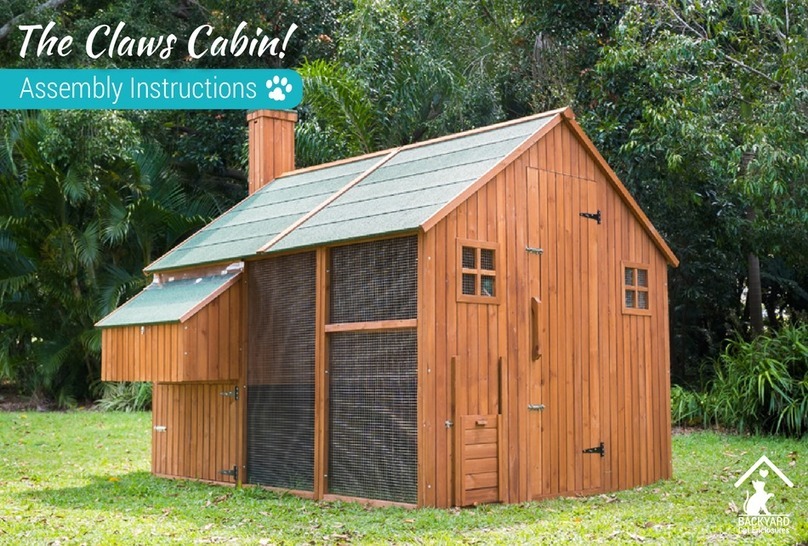
Backyard Cat Enclosures
Backyard Cat Enclosures Claws Cabin Assembly instructions

Exo Terra
Exo Terra Monsoon RS400 operating instructions
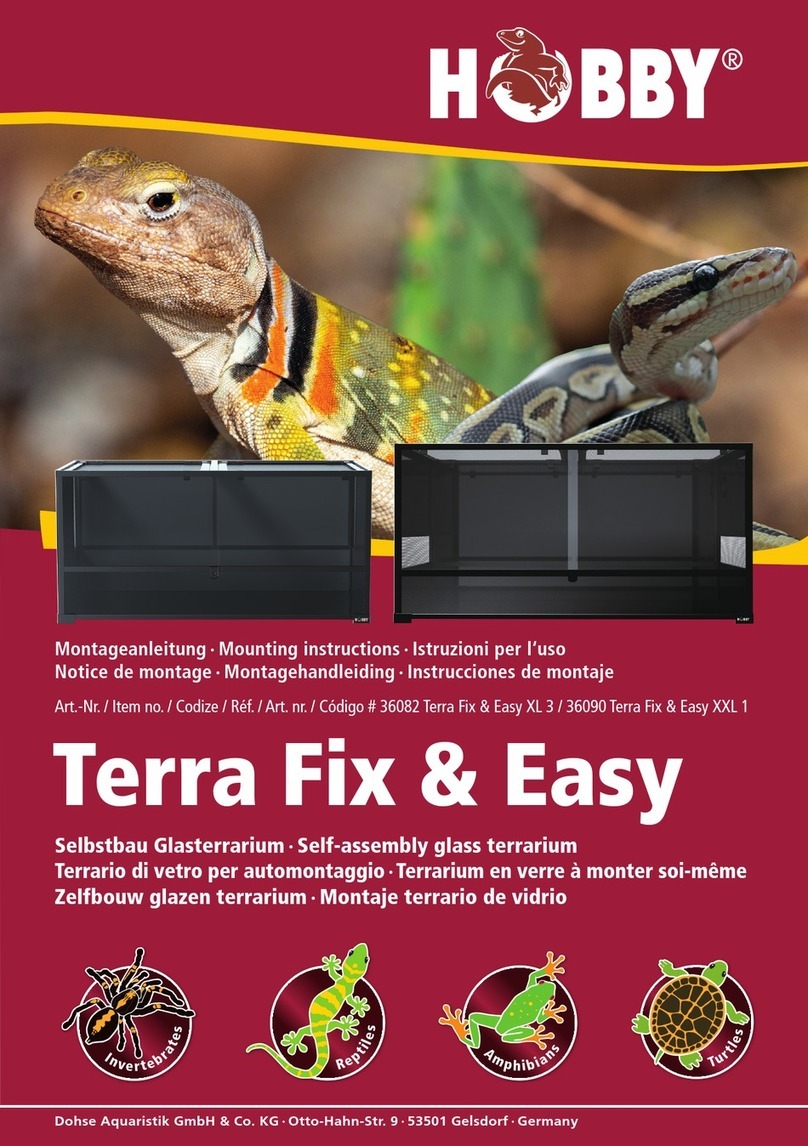
Hobby
Hobby Terra Fix & Easy XL 3 Mounting instructions
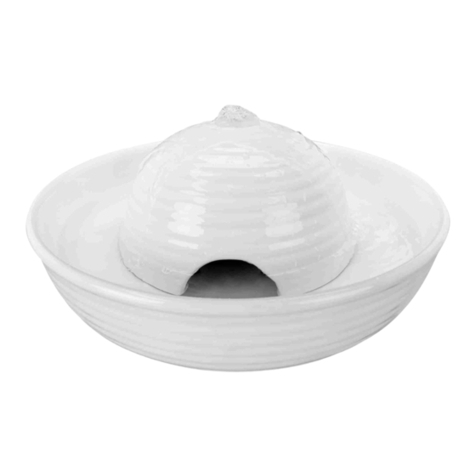
Trixie
Trixie 24442 manual
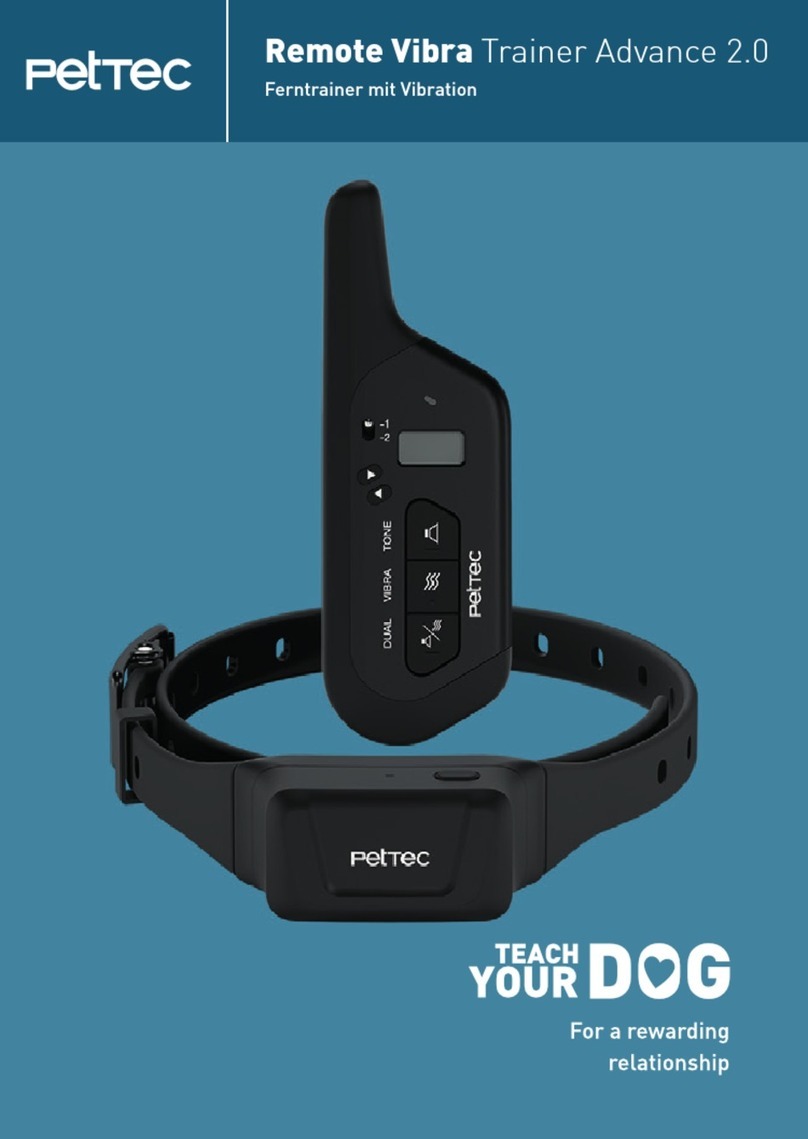
Pettec
Pettec Remote Vibra Trainer Advance 2.0 manual
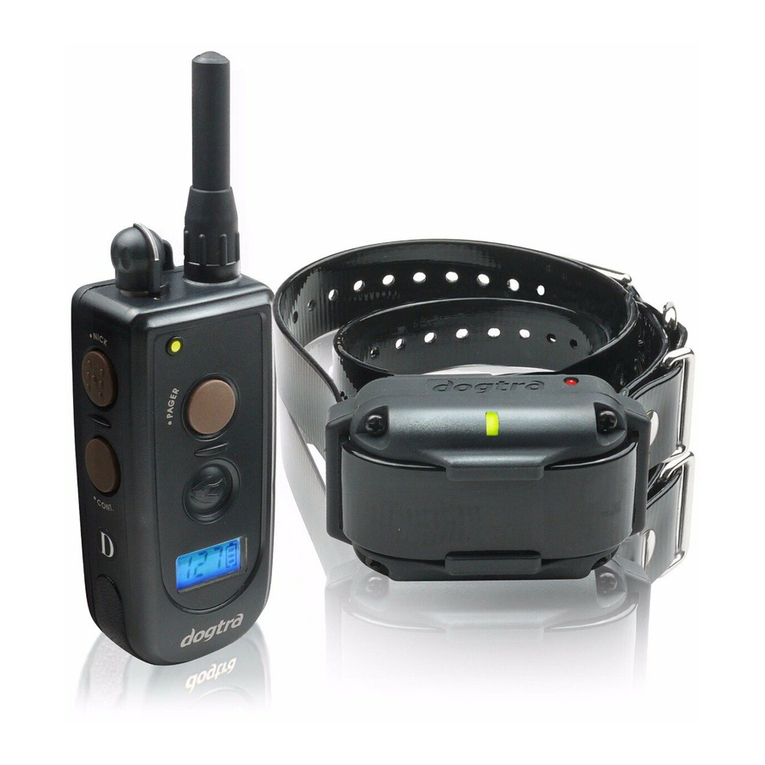
Dogtra
Dogtra 2300NCP EXPANDABLE owner's manual
